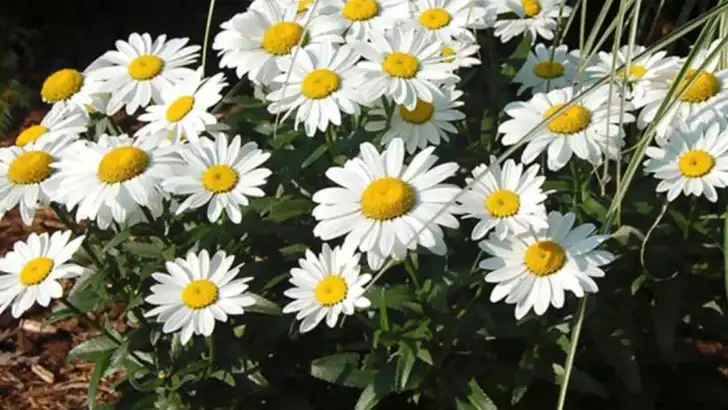Stop mourning your perennials when June ends! They don’t have to vanish like a one-hit wonder. You deserve blooms that stick around and show off. Some favorites burst into color and bow out before July. You’ve waited all spring for that spotlight moment— only to watch petals drop like confetti at closing time. It’s heartbreak in the garden. Lucky for you, there’s a playbook to extend the party. Think deadheading that teases reblooms. Think light pruning that teases encore after encore. Think nutrient boosts that fuel flower marathons. Dive into 20 beloved perennials notorious for early exits— and discover how to train them for a summer-long encore. Grab your clippers, load up on mulch, and get ready for a season of nonstop petals. Your garden’s about to learn some staying power!
Delphinium
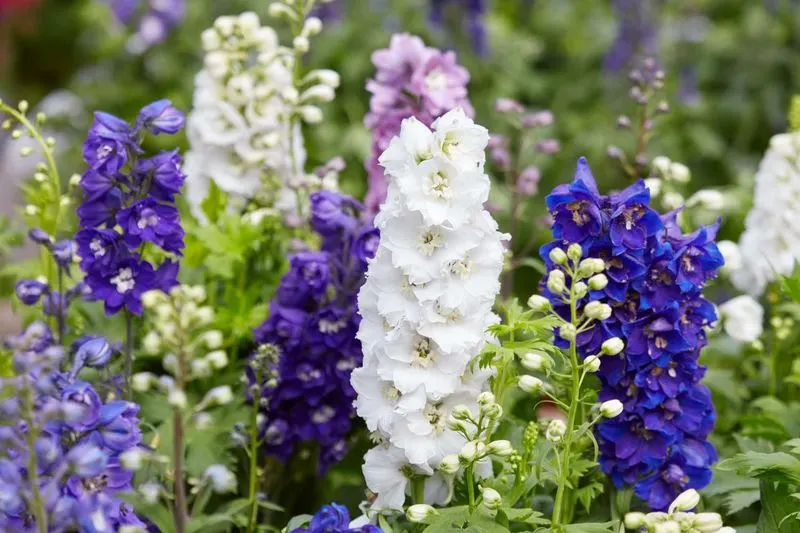
The majestic delphinium often graces cottage gardens with its striking spires of blue and white flowers. Originating from the Northern Hemisphere, these perennials are renowned for their beauty but have a short blooming period. Delphiniums thrive in well-drained soil and require regular watering. To prolong their bloom, deadhead spent flowers promptly.
Provide support for these tall plants as they grow, ensuring they don’t break under their own weight. Additionally, a layer of mulch helps retain moisture, enhancing bloom longevity. With care, delphiniums can provide a spectacular display.
Did you know? Delphiniums symbolize an open heart and ardent attachment.
Oriental Poppy
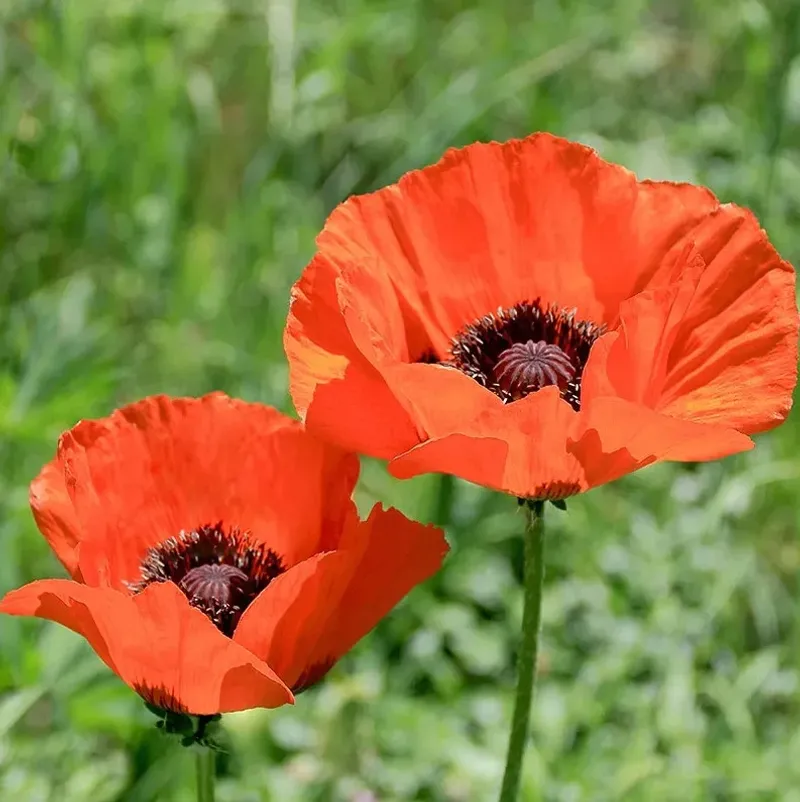
With fiery red petals and a black heart, the Oriental poppy commands attention wherever it grows. Native to Turkey, this perennial blooms briefly but leaves a lasting impression. To keep them vibrant, plant in well-drained soil and ensure full sun exposure.
After flowering, allow the foliage to die back naturally, providing essential nutrients for next year’s growth. Cutting back the foliage too early can stunt their development.
For an added splash of color, plant alongside summer-blooming perennials. Did you know? The poppy is a symbol of remembrance and has been used in various cultural rituals.
Peony
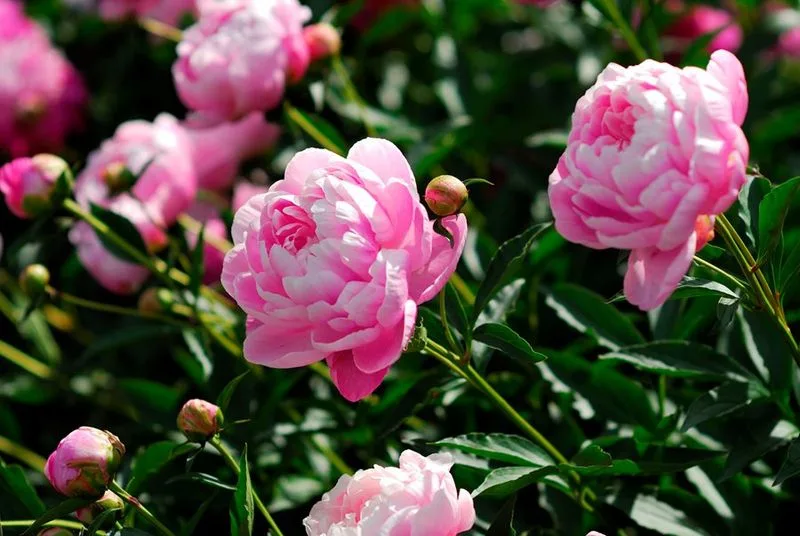
Peonies, with their lush, full blooms, captivate gardeners and florists alike. Native to Asia, Europe, and Western North America, they thrive in temperate climates. Plant peonies in fertile, well-drained soil and ensure they receive plenty of sunlight.
To extend their blooming period, consider removing some of the side buds, which allows the main bud to develop fully. Peonies benefit from staking to support their heavy blossoms.
These perennials often take a few years to establish but reward patience with breathtaking blooms. Fun fact: Peonies are known for their longevity and can live over 100 years in the right conditions.
Columbine
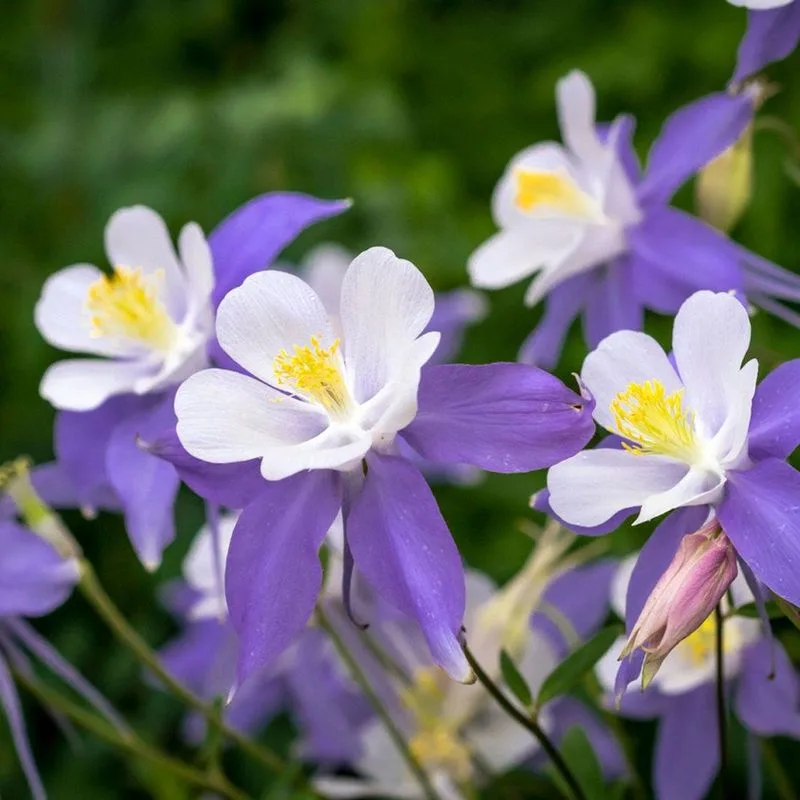
Columbines, with their delicate spurred petals, bring a touch of whimsy to any garden. These charming flowers are native to North America and Europe. They flourish in well-drained soil and partial shade. Regular deadheading encourages continued blooms throughout the season.
To prolong their life, avoid over-watering and ensure they have good air circulation, reducing the risk of fungal diseases. Columbines self-seed, allowing them to return year after year.
Did you know? The blue columbine is the state flower of Colorado, symbolizing fidelity and peace.
Bleeding Heart
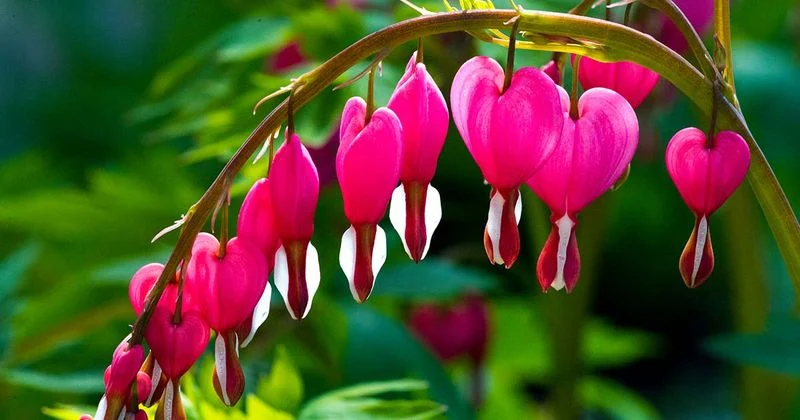
The Bleeding Heart plant enchants with heart-shaped flowers dangling gracefully from arching stems. Native to Asia and North America, they prefer shady spots and moist, fertile soil. To keep them blooming longer, ensure consistent moisture, especially during dry spells.
Once flowering ends, the foliage often dies back. Allow this process naturally, as it feeds the plant for future growth. Companion planting with ferns or hostas can fill the space they leave behind.
Fun fact: The Bleeding Heart’s unique shape symbolizes love and compassion, making it a favorite in romantic garden settings.
Lupine
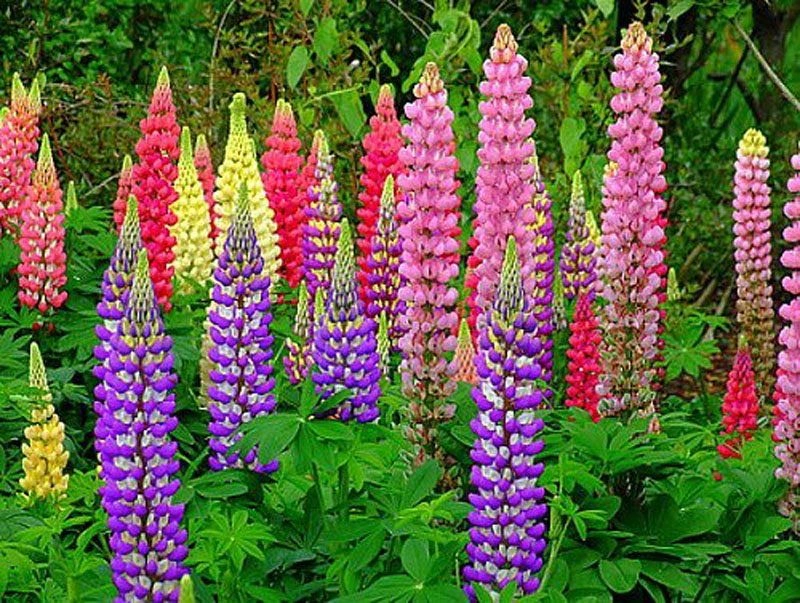
Lupines are captivating with their towering spikes of dense flowers in a spectrum of colors. These North American natives are ideal for sunny borders and well-drained soils. To extend their blooming period, deadhead spent flowers and provide regular watering.
Adding organic mulch can help retain soil moisture, promoting growth and prolonging blooms. Lupines can fix nitrogen in the soil, improving the quality for future plants.
Did you know? Lupines are related to beans and peas, and their seeds were once used as food by Native American tribes.
Candytuft
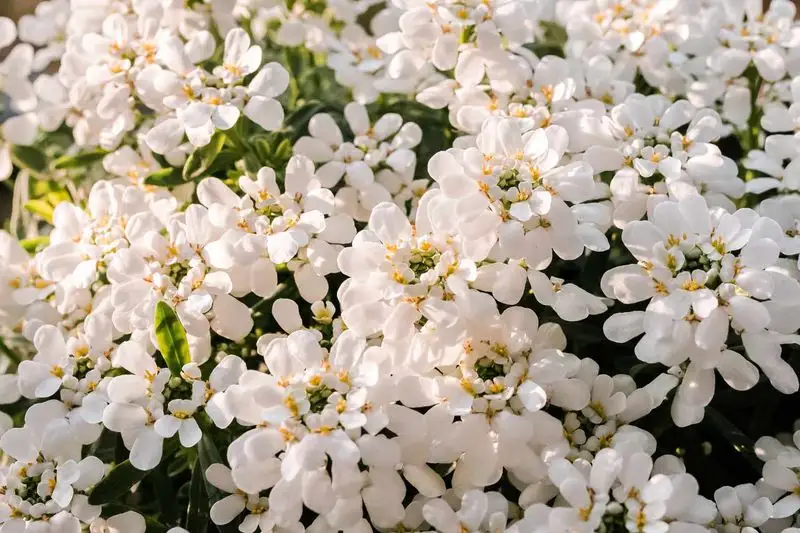
Candytuft, with its delicate clusters of white flowers, adds elegance to rock gardens and borders. Native to Southern Europe, they favor sunny locations and well-drained soil. To encourage prolonged blooming, trim back after the first flush of flowers.
Regular pruning not only stimulates further blooms but also maintains a neat appearance. Overwatering can lead to root decay, so ensure the soil is not too wet.
Fun fact: Candytuft gets its name from Candia, an ancient name for Crete, reflecting its Mediterranean origins.
Foxglove
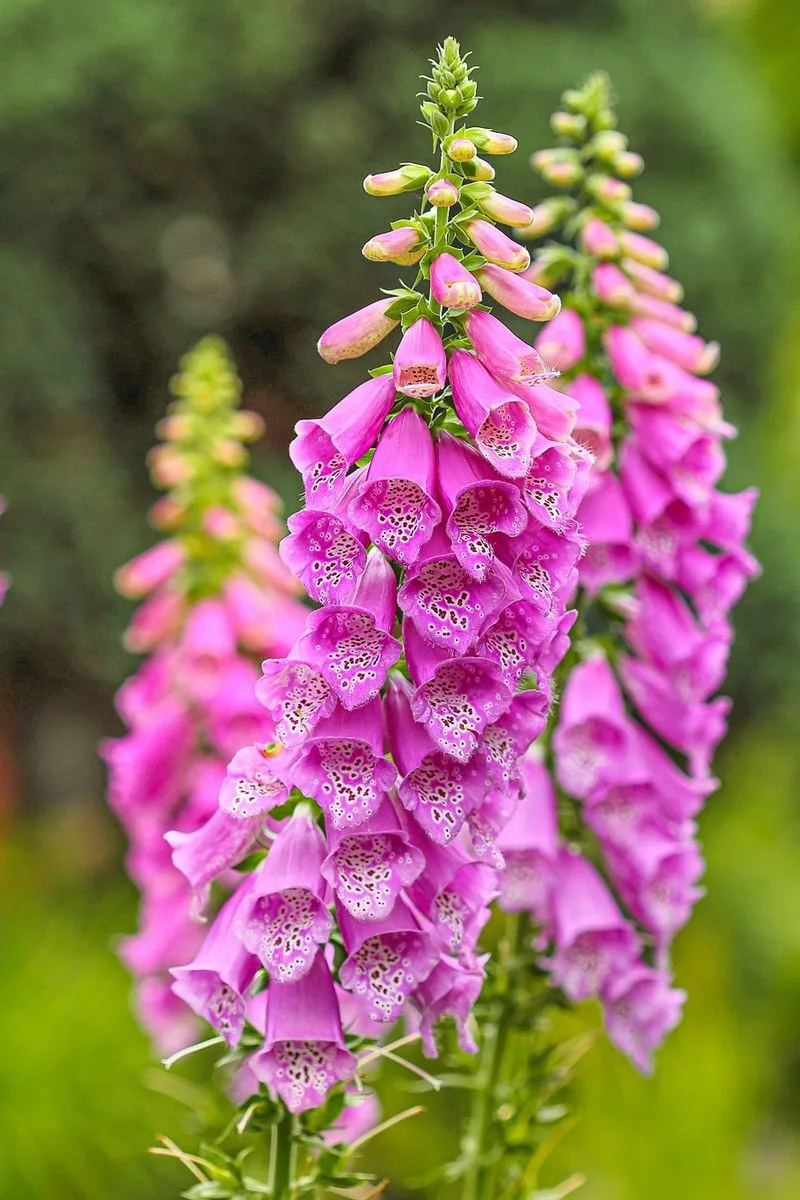
Foxgloves stand tall with their tubular, bell-shaped flowers, adding drama to any garden setting. These European natives prefer partial shade and well-drained soil. To prolong their bloom, deadhead regularly and provide support against strong winds.
Caution is needed, as all parts of the plant are toxic if ingested, but they attract beneficial pollinators like bees. Foxgloves often reseed themselves, returning better each year.
Did you know? The name Foxglove is believed to derive from “folk’s glove,” referring to the plant’s association with fairy folklore.
Coreopsis
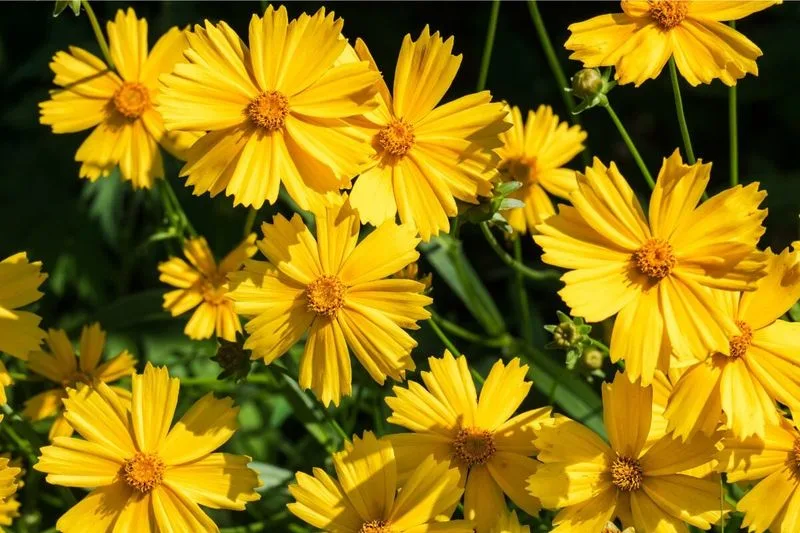
Coreopsis, also known as tickseed, bursts into bloom with cheerful yellow flowers that resemble daisies. Native to the Americas, these hardy perennials thrive in sunny spots and well-drained soil. Remove spent flowers regularly to sustain their bloom season.
They are drought-tolerant but appreciate occasional watering during prolonged dry spells. Coreopsis pairs beautifully with other sun-loving perennials, creating vibrant garden displays.
Fun fact: Coreopsis was named the state wildflower of Florida, celebrated for its bright and sunny disposition.
Gaillardia
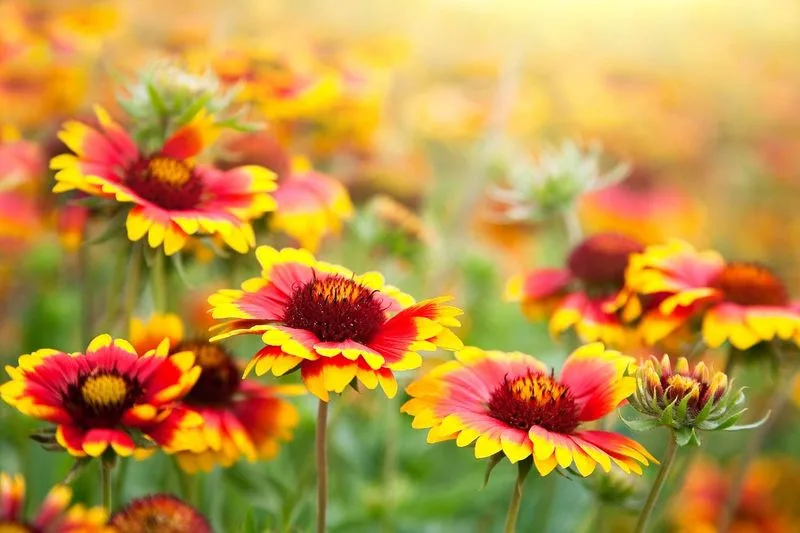
Gaillardia, or blanket flowers, dazzle with their fiery red and yellow blooms. These North American natives are known for their resilience in sunny, dry conditions. To keep them blooming longer, deadhead regularly and provide occasional deep watering.
They thrive in poor, sandy soils, making them perfect for less fertile areas. Planting in groups enhances their visual impact and attracts pollinators like butterflies.
Did you know? Gaillardia is named after an 18th-century French magistrate, M. Gaillard de Charentonneau, a patron of botany.
Forget-Me-Not
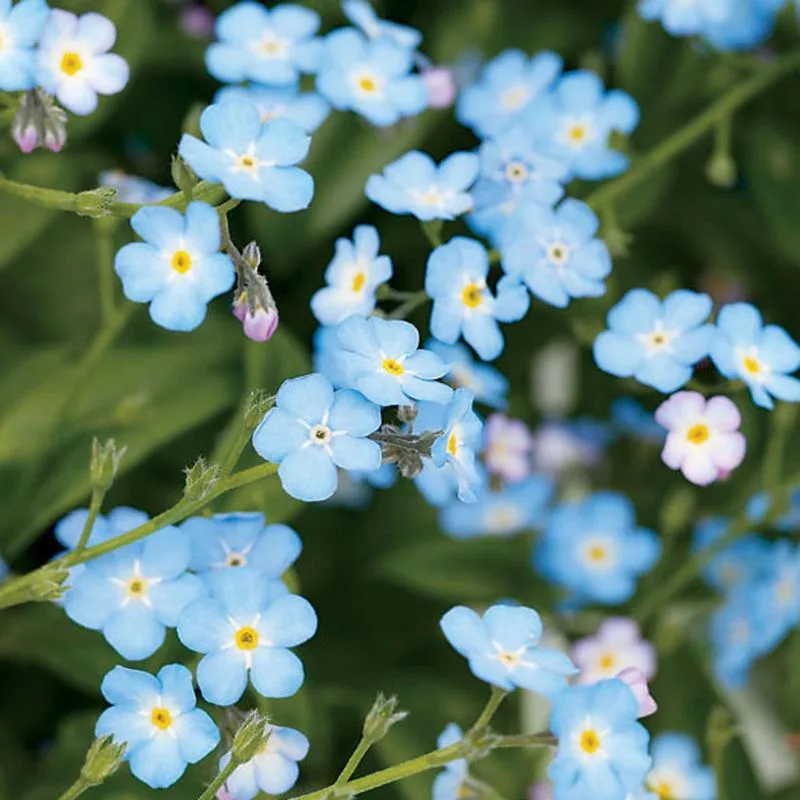
With its charming sky-blue flowers, the Forget-Me-Not is a nostalgic favorite in many gardens. Known for its self-seeding nature, it often pops up unexpectedly year after year. To prolong its bloom, regularly deadhead the spent flowers.
These plants thrive in moist soil and partial shade. If you provide these conditions, they may reward you with a second bloom later in the season.
A fun fact: Forget-Me-Nots have been used as a symbol of remembrance and were even adopted by the Freemasons as a sign of enduring memory.
Pasque Flower
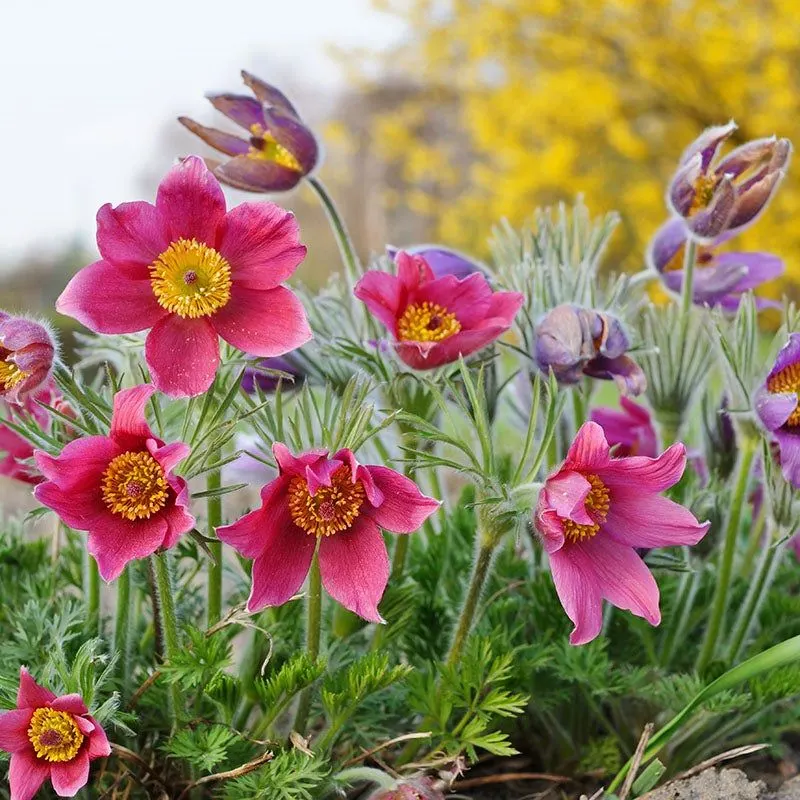
Pasque Flower captivates with its silky petals and early spring blooms. Positioned in well-drained soil and full sun, it thrives and blossoms abundantly.
To extend their blooming, consider cutting back the faded flowers to encourage reblooming. Their fuzzy, feathery seed heads provide additional garden interest.
Interestingly, the name ‘Pasque’ is derived from ‘Paschal,’ referring to Easter, as these flowers often bloom around this time. Their resilience in harsh conditions is admirable, making them a delightful garden asset.
Balloon Flower
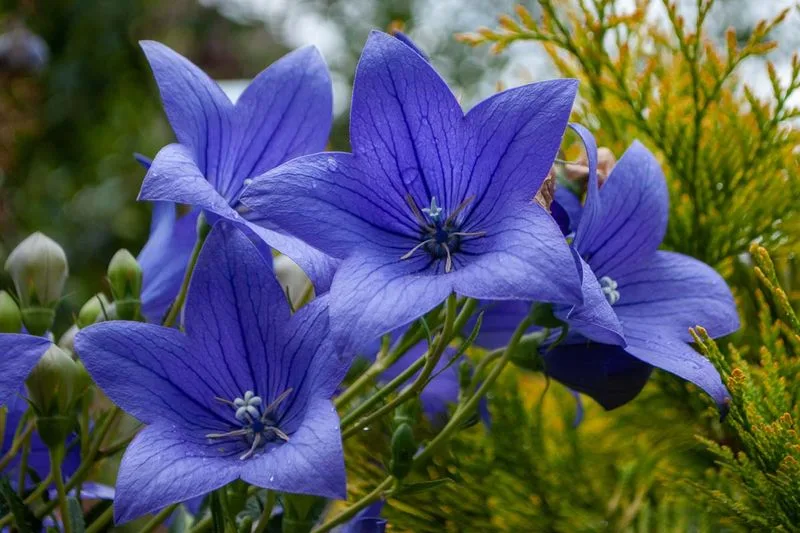
The Balloon Flower is adored for its unique balloon-like buds that burst open into star-shaped flowers. They are robust and can flourish in a variety of conditions.
For prolonged blooming, deadhead regularly and provide rich, well-drained soil. These plants are relatively pest-free and require minimal maintenance.
A captivating anecdote: some cultures view the blossoming of Balloon Flowers as a symbol of eternal love and sincerity. Their whimsical appearance makes them a favorite among children and adults alike, adding a playful element to any garden.
Sea Holly
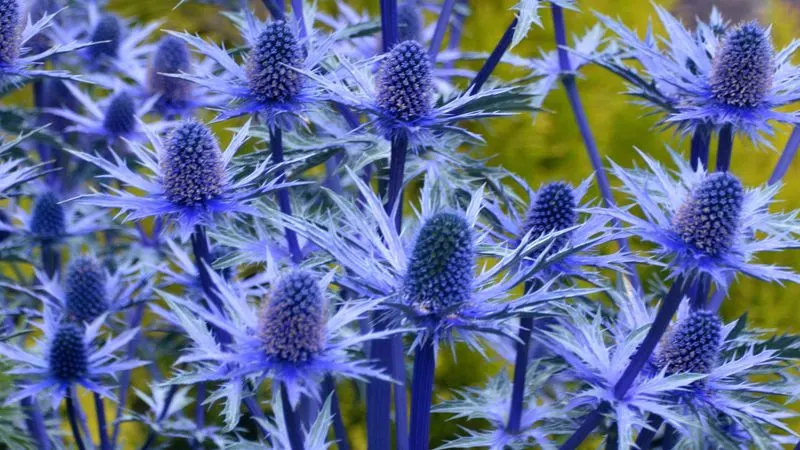
Sea Holly stands out with its metallic blue flowers and spiny leaves. Perfect for coastal gardens, they thrive in sandy, well-drained soils.
To ensure a longer bloom period, cut back the spent flowers to promote a second flush. Despite their prickly appearance, they attract bees and butterflies, offering ecological benefits.
Did you know? Sea Holly has been historically used in herbal medicine. Its unique structure and resilience make it a distinctive choice for garden enthusiasts seeking something different.
Loosestrife
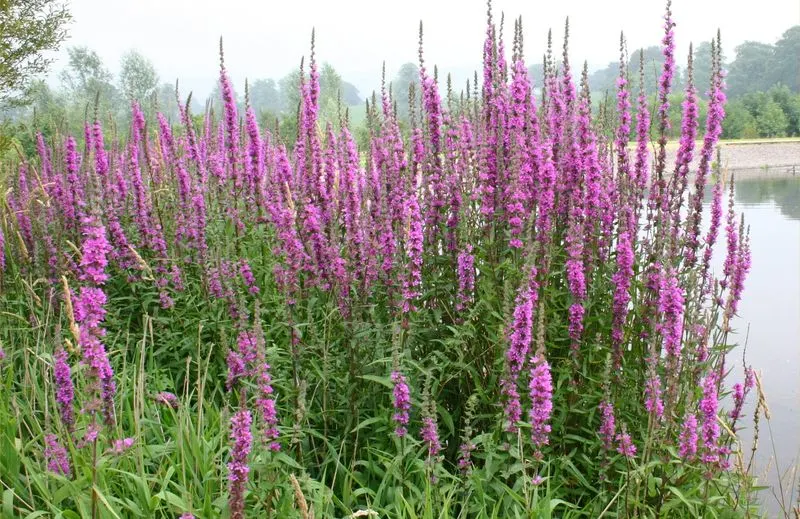
Loosestrife is a controversial yet captivating plant. Its tall spires of purple flowers can turn heads, but it’s known for being invasive.
To enjoy its beauty responsibly, deadhead frequently and choose sterile varieties to prevent spreading. They enjoy moist soils and can thrive near water bodies.
Intriguingly, Loosestrife has historical significance in traditional medicine for treating wounds. Despite its invasive nature, it offers a striking visual when carefully managed in gardens.
Evening Primrose
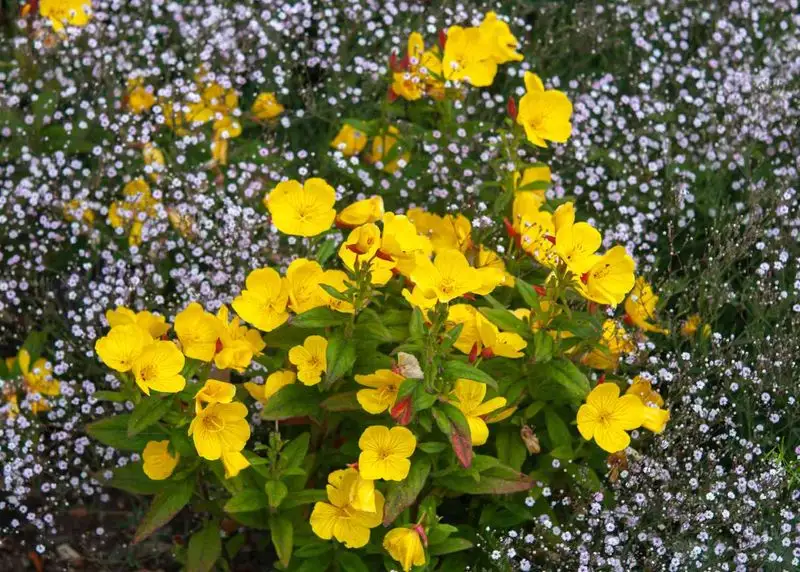
Evening Primrose enchants with its vibrant yellow blooms that open at dusk. They are ideally suited for sunny locations and well-drained soils.
Regular deadheading can extend their blooming period, ensuring more nighttime displays. Often associated with moonlit gardens, they attract nocturnal pollinators.
Fun fact: Native Americans traditionally used Evening Primrose for its medicinal properties, including skincare and pain relief. Its beauty and utility make it a valued addition to evening gardens.
Hollyhock
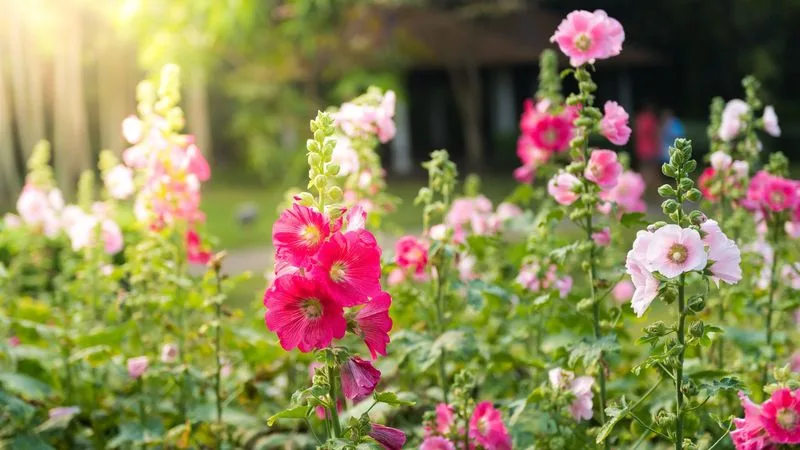
Hollyhocks are quintessential cottage garden staples with their towering, colorful blooms. They prefer full sun and rich, well-drained soil.
To keep them blooming longer, remove faded flowers and support their tall stems to prevent breakage. They can self-seed, ensuring future generations.
Historically, Hollyhocks were believed to ward off evil spirits when planted near homes. Their nostalgic charm and vibrant colors continue to captivate gardeners worldwide.
Snapdragon
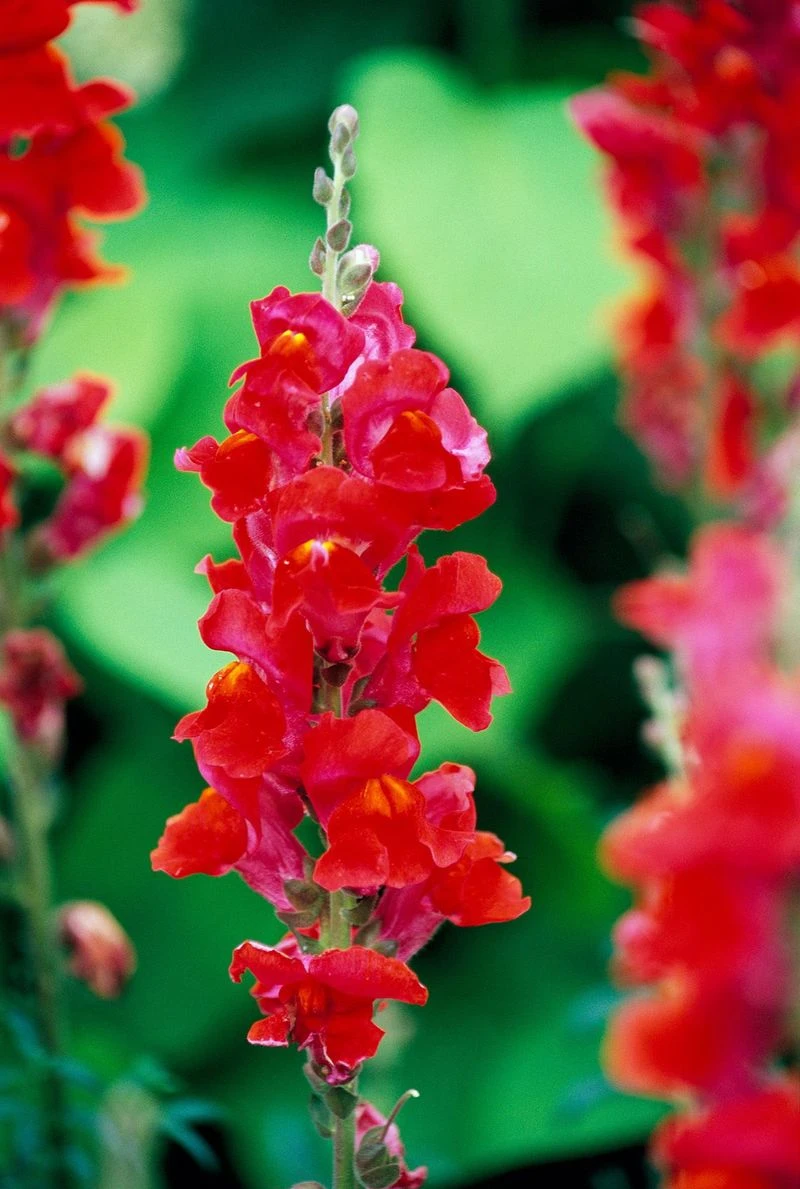
Snapdragons bring a playful touch to gardens with their dragon-shaped flowers. Thriving in cooler temperatures, they enjoy full sun and fertile soil.
For extended blooms, deadhead regularly and provide consistent moisture. They are a favorite for cutting gardens, adding charm to bouquets.
An interesting tidbit: Snapdragons get their name from the flowers’ resemblance to a dragon’s face that ‘snaps’ open. This unique characteristic makes them endearing to both young and old.
Black-eyed Susan
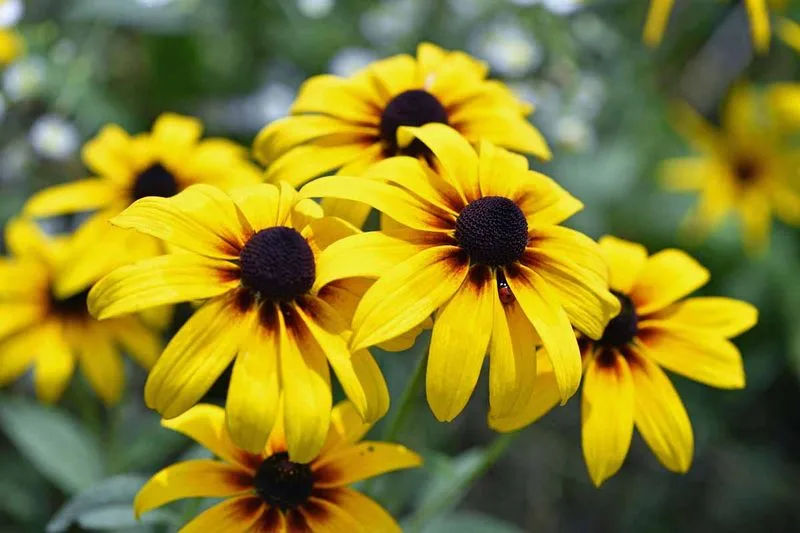
Black-eyed Susans are radiant with their sunny yellow petals and dark centers. They thrive in full sun and adaptable to various soil conditions.
To extend their flowering, deadhead and divide clumps every few years for rejuvenation. They attract butterflies, enhancing garden biodiversity.
Did you know? Black-eyed Susan is the state flower of Maryland, symbolizing justice and fairness. Their cheerful appearance and easy maintenance make them a popular choice among gardeners.
Shasta Daisy
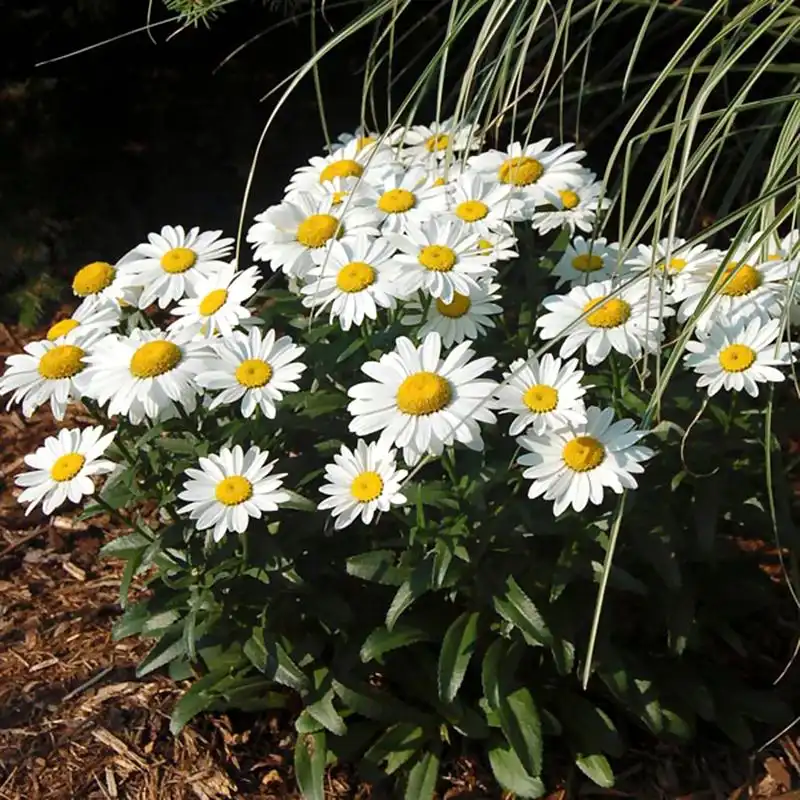
Shasta Daisies exude classic elegance with their white petals and sunny centers. They enjoy full sun and well-drained soil, making them versatile across gardens.
Regular deadheading encourages more blooms, and dividing clumps every few years ensures vigor. Their cheerful demeanor makes them universally loved.
Fun fact: Shasta Daisies were developed by Luther Burbank, combining several wild species. Their simplicity and brightness continue to light up gardens, embodying timeless beauty.

